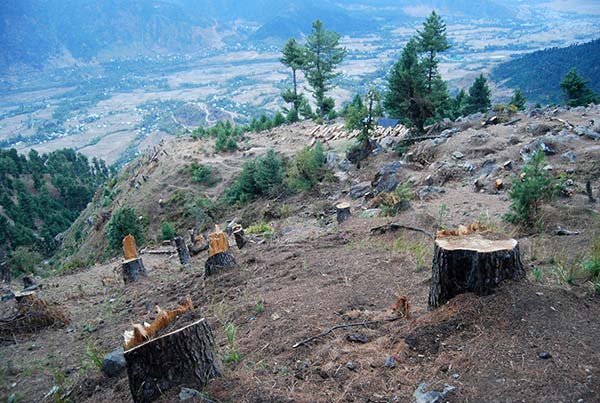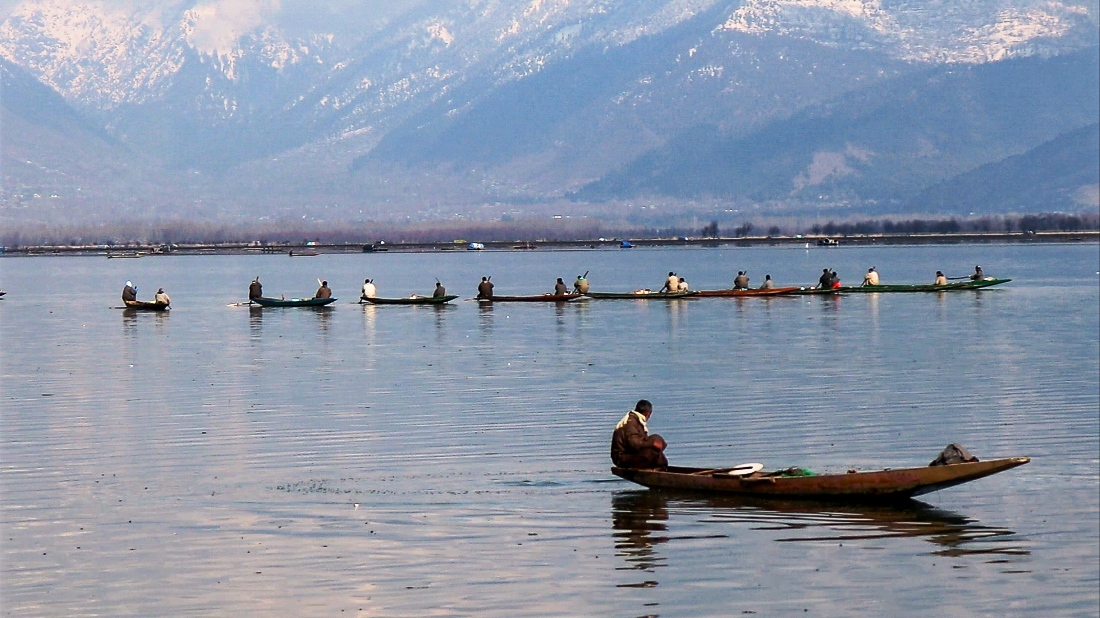by Dr M Junaid Jazib
Man, in his progressive and exploitative craziness, has endangered his own survival by damaging the habitat he rests on for almost everything he needs in life. Resources, vital for his life, have been depleted to a level beyond their replenishing capability. Air and water are dumped with toxic chemicals. The land is rendered infertile and unproductive.

Diversity is an essential attribute of a system. A system, be it physical, biological, mechanical or abstract, is a function of the variety of its constituent elements. It is but its components’ variability and uniqueness that imparts a system its systemic characteristics. The magnitude of the diversity at work in a system is a direct measure of its strength, stability and sustainability.
From an atom to the galaxies nature favours diversity in every sense of the word. The earth comprises of an assemblage of diverse kinds of systems all incorporated into a single sophisticated biophysical whole. All the different kinds of constituent setups working together enable the earth to support life on it. The web of life that adorns the planet constitutes an intricate biological system that contains and sustains in its lap an immeasurable treasure of biotic diversity. The biosphere, a huge ecological system spanning the entire planet, owes its functioning and stability to the stupendous diversity in the living world.
Explaining Biodiversity
Biodiversity relates to all the different kinds of life that make up our natural world. From the polar icecaps to the tropical woods and from the oceanic trenches to the mountainous peaks, there exist varied kinds of habitats representing diverse ecological systems like the sea, marshes, deserts, forests, rocks, rivers, glaciers, ice caps, etc.
Each of these ecosystems supports different kinds of life forms. Every form of life varies vastly within itself. It not only ornaments the surface of the earth but also plays a vital role in the planet’s overall health and stability. For its part in the earth’s energy flow mechanism, climate regulation, nutrient recycling, etc., biodiversity impacts and regulates our physicochemical environmental regimes.

Mother earth is, in fact, a giant living organism in itself. It consumes energy, functions as an individual, undergoes transformations, breathes, perspires, excretes, changes and grows older. Within its life-sustaining folds, it has allowed the evolution of a great spectrum of life. Originated as a single-celled organism, life has eventually assumed unbelievably diverse forms we see on the surface of the planet. The huge pool of genes and the millions of species of plants, animals and microorganisms currently present on the face of the earth are a product of the millions of years of the evolutionary history and an asset we cannot afford to lose.
Uniquely Linked
Despite having evolved and developed into uniquely different kinds of physical and biological regimes every living unit ranging from an individual to a biome is intimately and multifariously linked to every other such unit. In ecological jargon, everything is deeply linked with everything else in the ecosphere. All the distinct and ostensibly unrelated forms of life are, however, inherently connected in a single continuum. In this ‘inter-relatedness’ lies the stability of the planet and the life thereon.
Man, if truth be told, is simply a part of this greater and intricate whole known as the web of life. All the life-forms, in this massive whole, are equally and essentially important. With the specific roles assigned to every being from the tiniest creatures to the largest ones, a balance on the earth and within the entire spectrum of life is maintained. This whole is stable, strong and dynamic as well as, simultaneously, fragile and extremely susceptible. Speciation and extinction are the natural parts of the processes involved in the course of larger ecological evolution but the forced exclusion of a single biological species is bound to bring detrimental changes in the planet’s overall health.
Humans, despite their advantageous position and dominating nature, factually remain a segment of the ecosystem and contribute to its overall biodiversity. They are, thus, also bound to get impacted by any changes taking place in the ecological systems they belong to.
Human Dependence
A great majority of our day-to-day needs come from biodiversity. The diversity of aquatic and terrestrial ecosystems is vital for human society and impacts our health, progress, economy, polity etc. in multifaceted ways. Agriculture, fishery, forestry, pharmaceutical industry and many more of our social, economic and livelihood related activities are directly linked with biodiversity. Biodiversity means the availability of food and medicine, raw material for industries, nutrient recycling, absorption of toxic pollutants, cushioning of environmental stresses, improvement in climatic conditions and finally a safe and stable environment. A decrease in biodiversity affects pollination and production in agriculture, increases the spread of diseases, causes economic losses and instability in ecosystems and encourages poverty and non-availability of resources.

The ever-operative natural dynamism and versatility can bear or correct mild interruptions and alterations in the ecosphere but can’t stand natural or human disruption beyond its repairing capacity. The decline in the biological diversity of an ecosystem means its degradation which leads to large-scale chaos in its structural and functional domains.
Man, in his progressive and exploitative craziness, has endangered his own survival by damaging the habitat he rests on for almost everything he needs in life. Resources, vital for his life, have been depleted to a level beyond their replenishing capability. Air and water are dumped with toxic chemicals. The land is rendered infertile and unproductive. Fellow living creatures are forced to extinct 100 times faster. More than fifty per cent of extinctions have occurred during the last few decades. Unfavourable changes in hydrological regime, rising seas, melting glaciers, shrinking water table, irregular precipitations, unusually warming earth, etc are more linked to man’s doings than to natural occurrences.

These developments are not ordinary or irrelevant when seen in context with the future of life in general and mankind in particular. And it is not hard to visualize the unlucky state of our future survival and existence when everything around us is messy and unwell. If continues to aggravate at the present pace, even a single one of the above-mentioned inauspicious changes is enough to eradicate human existence from the planet.
Man, as an integral part of the natural world, is, naturally, at the receiving end for all of his misconduct with his natural habitat. It is, however, never too late to wake up and correct our attitude and course of action. Judicious use of resources, avoidance of wastage, no to pollution, thought of future generations and love and reverence for every form of life can help us survive and save our planet. Diversity in the biological world is vital for the life support system and need to be respected for the perpetual existence of life on the planet.
(The author is heading the Environmental Science department at the Government Post Graduate College, Rajouri. Ideas expressed in the write-up are personal.)














